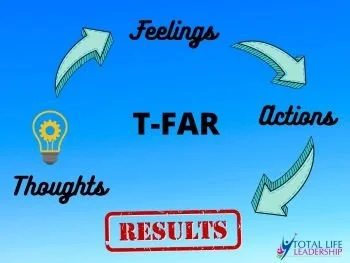How to Face a Crisis with a Calm, Clear-Headed Focus
The Six Pillars of Passionate Leadership provide a solid foundation for purpose-driven non-profit leaders and service entrepreneurs. Leaders who excel in the six pillars are more effective in guiding all the stakeholders who work to fulfill the mission of their organization. Passionate leaders are energized by both the cause they serve AND by leading those who serve the cause with them. Both must be present for maximum impact.
Inspired Action is Pillar #5 of the The Six Pillars of Passionate Leadership. Inspired action is action taken with a calm, clear-headed focus. The outcome is more effective decisions and better results.
Let's discuss what happens when you take action (or not) without a calm, clear-headed focus. Both inaction and knee jerk re-actions are almost always based on a mind hijacked by fear. Fear of what could go wrong; fear of who might be impacted; fear of (you name it). When your thoughts generate a fear response, your ability to take Inspired Action is severely hampered. And fear-based action often translates into less than optimal results.
There's an acronym for what I'm talking about.
T-FAR - Thoughts {lead to} Feelings {lead to} Actions (lead to} Results.
When it's time to take action, you want to be able to get a wide view of your options. The feeling of fear results in stress and overwhelm that, in turn, create mental "blinders" that limit your choices. A mind free from fearful thoughts can more easily access a wide angle lens to identify and evaluate options and opportunities.
So how do you create the "head space" for consistently taking Inspired Action?
The most effective way to manage your thoughts is to develop a mental practice in which you can easily dial down your judgment and then dial up your curiosity. What does that look like?
Imagine that your organization is facing a financial crisis. A source of funding you were relying on has been cancelled. Your first thought might be to ask "Who's to blame?" That blame thought could lead to feelings of shame (if you blame yourself), anger (if you blame a team member) and/or indignation (if you blame the funding source). Those feelings, if acted upon too quickly, are likely to lead to short-sighted actions that produce results which are ultimately disservice to the organization.
What to do instead?
First, acknowledge that when a crisis happens, your survivor brain will kick in. That's where the blame thoughts come from.
Second, uncouple from the blame thoughts quickly by creating a pause - a mindfulness pause - that allows you to dial down the judgment.
Third, engage your "sage" brain to dial up your curiosity and discover more about what's going on before deciding or acting.
This change in perspective will open you up to recognizing the gift or opportunity in the situation.
For a funding crisis, perhaps the opportunity is to re-evaluate your programs or services. Which ones are critical and which ones could be put on hold? Or perhaps it's the opportunity to seek more sustainable funding.
Yes, in every situation there is a gift or opportunity.
So how does one train the brain to dial down judgment and dial up curiosity? It's called a Mental Fitness practice. Just as with physical fitness, it takes persistent practice. Total Life Leadership offers individuals and teams an 8 Week Mental Fitness Bootcamp. Learn more about it here.
I'm not saying that in a crisis there won't be difficult decisions to be made. Nor that you should abandon empathy for yourself and those impacted. I am saying that, with an effective Mental Fitness practice, difficult challenges can be faced with a calm, clear headed focus that leads to Inspired Action and better results.
Passionate Leader Pillar #5 - Inspired Action
You take action with calm, clear-headed focus.
About the Author
Gayle Ely is a Leadership Coach, Trainer and Facilitator and founder of Total Life Leadership. At Total Life Leadership, we partner with purpose-driven non-profit leaders and service entrepreneurs to help them answer the question “How Do I Become a Better Leader?”
Using The Six Pillars of Passionate Leadership, we equip leaders to be the best they can be. The result is a passionate leader whose team and organization are operating for maximum impact.
Explore what’s getting in the way of passion in your leadership. Schedule an exploratory conversation. There is no cost and lots of value.
Schedule your complimentary conversation here.
Click here to subscribe to the weekly newsletter.
Linked-In profile
View The Six Pillars of Passionate Leadership here.
View The Power of Passionate Leadership Model here.


